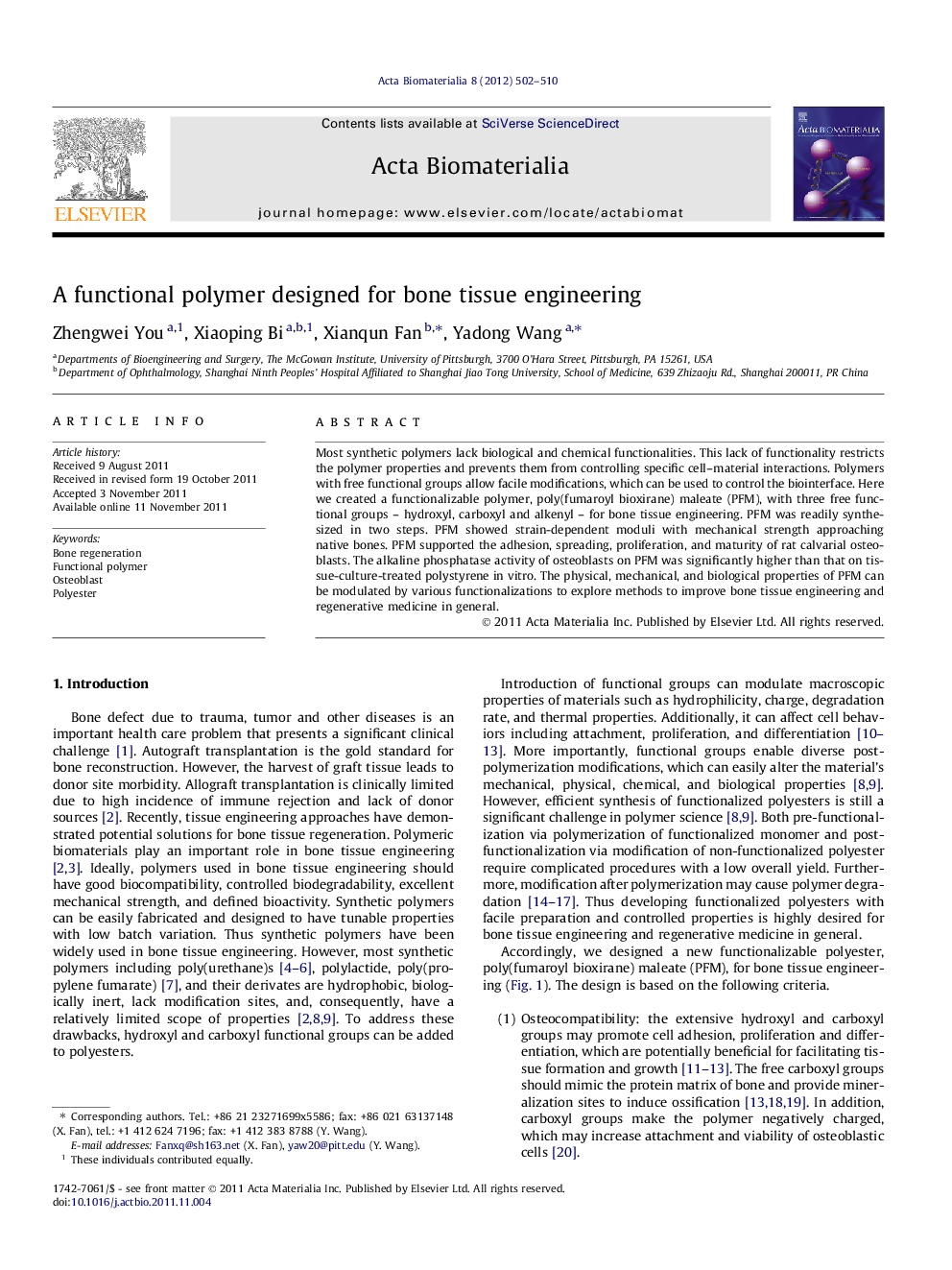| Article ID | Journal | Published Year | Pages | File Type |
|---|---|---|---|---|
| 1450 | Acta Biomaterialia | 2012 | 9 Pages |
Most synthetic polymers lack biological and chemical functionalities. This lack of functionality restricts the polymer properties and prevents them from controlling specific cell–material interactions. Polymers with free functional groups allow facile modifications, which can be used to control the biointerface. Here we created a functionalizable polymer, poly(fumaroyl bioxirane) maleate (PFM), with three free functional groups – hydroxyl, carboxyl and alkenyl – for bone tissue engineering. PFM was readily synthesized in two steps. PFM showed strain-dependent moduli with mechanical strength approaching native bones. PFM supported the adhesion, spreading, proliferation, and maturity of rat calvarial osteoblasts. The alkaline phosphatase activity of osteoblasts on PFM was significantly higher than that on tissue-culture-treated polystyrene in vitro. The physical, mechanical, and biological properties of PFM can be modulated by various functionalizations to explore methods to improve bone tissue engineering and regenerative medicine in general.
Graphical abstractFigure optionsDownload full-size imageDownload high-quality image (193 K)Download as PowerPoint slide
